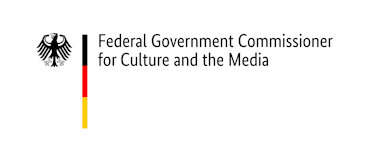EU Regulation on the introduction and the import of cultural goods
Purpose
The EU Import Regulation seeks to protect items of cultural heritage originating in countries outside the European Union. The EU adopted binding common rules on the export of cultural property from the EU over 25 years ago, when its borders were opened up by the advent of the internal market, and Regulation (EU) No 2019/880 has now created uniform rules for imports into the EU. The aim is to make it harder for objects unlawfully exported from their countries of origin to enter and thus be sold in the EU. This standardization of import rules may also drive forward the harmonization of competition conditions in the European art market, something for which calls are repeatedly heard.
Scope of the Regulation
The EU Import Regulation applies exclusively to cultural property originating outside the European Union. Cultural goods which were created or discovered in the customs territory of the Union and which return to Europe do not fall within the scope of the Regulation.
Exactly which types of cultural property are covered by the Regulation is determined in a differentiated manner depending on the rules applicable to each, with an annex for each type. These annexes list the categories of cultural goods covered by the relevant provisions of the Regulation and, in some cases, contain additional (age and value) criteria which must also be met.
A graduated system of measures: from total ban to self-certification
The EU Import Regulation provides for a graduated system of measures, consisting of:
• total prohibition of the introduction of cultural goods that were illegally removed from their countries of origin, whatever their age and value (Article 3(1) in conjunction with Part A of the Annex to the Regulation. This principle is comparable to the import ban in Germany’s Act on the Protection of Cultural Property (Kulturgutschutzgesetz, KGSG));
• an import licence requirement for archaeological cultural goods and elements of historic monuments, whatever their value but more than 250 years old (Article 4 in conjunction with Part B of the Annex to the Regulation); and
• an importer statement for other categories of cultural goods classified as less endangered, more than 200 years old and with a value of more than EUR 18,000. The statement comprises registration of a description of the object and a declaration by the importer that the cultural property concerned has been lawfully obtained (Article 5 in conjunction with Part C of the Annex to the Regulation).
The prohibition on introduction expresses a general principle, whilst the import licensing procedure and importer statement require action on the part of the importer. In both of the last two cases, these procedures must be completed before the property clears customs.
Entry into force and application
The prohibition of introduction enters into force on 28 December 2020. For the import licensing and importer statement procedure, however, the European Commission is developing an electronic system which will enable economic operators, licensing authorities and customs to complete the new procedures entirely online. Thus these procedures will be applicable only once the requisite technical preparations have been completed. The legal date for this is 28 June 2025.
Criterion of lawful import and relaxation of procedures
The EU Import Regulation applies the country of origin principle customary in matters relating to the protection of cultural property, i.e. in order for cultural goods to be imported lawfully into the EU, they must have been lawfully exported from their country of origin (not from the country of export, which may be different). However, in certain cases, the Regulation grants exceptions to this rule and allows lawful export to be assessed by reference to the law of a country of export which is not the same as the country of origin.
These exceptions cover the following cases:
• country of origin unknown; and
• goods exported from the country of origin prior to the entry into force of the UNESCO Convention, i.e. before 24 April 1972.
In both cases, however, proof must be provided that the cultural property in question has been in the relevant country of export for at least five years. The purpose of this last provision is to prevent exporters from deliberately choosing a country with a weak legal system and exporting goods to the EU from there.
The EU Import Regulation also relaxes the rules for art fairs: for the purpose of exhibition at an art fair, cultural goods which, by reason of their category and age, would normally require an import licence may be imported temporarily using the importer statement procedure. Only if the objects concerned remain in the EU (e.g. because they are sold) must the import licensing procedure be completed. There is no requirement to do so if the cultural goods are exported again after the fair, that is to say if they do not remain in the EU.
Conversely, goods which leave the EU only temporarily (e.g. for prior viewings in Switzerland) and are thus returned goods within the meaning of the Union Customs Code will also be exempt from the import requirements even though, as objects not originally created or discovered in the EU, they would normally come within the scope of the import rules.
Jurisdiction and procedures
Future import licences as required by Article 4 of the EU Import Regulation will be issued by the competent national authorities designated by EU Member States as stipulated in Article 2(5) of the Regulation. In Germany, the Federal Art Administration (KVdB) within the portfolio of the Federal Government Commissioner for Culture and the Media (BKM) shall be responsible for this procedure.
Importers can complete the importer statement procedure described in Article 5 of the EU Import Regulation themselves, using the proposed electronic system. Details of the procedure will be given in an implementing act which the EU Commission will issue in respect of the Regulation.
Penalties
Penalties for infringements of the Import Regulation will be set in accordance with domestic law.

